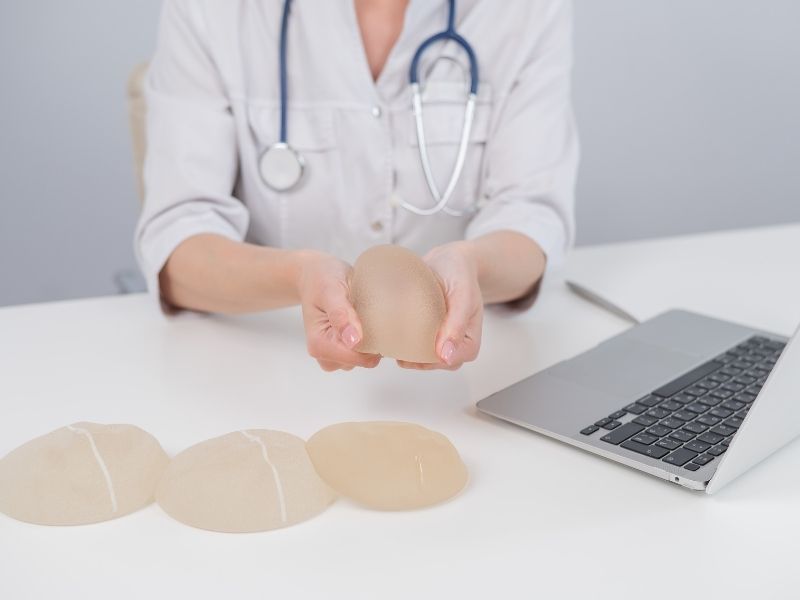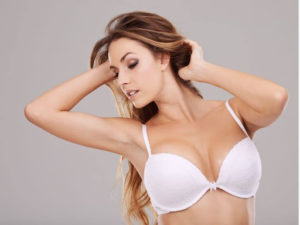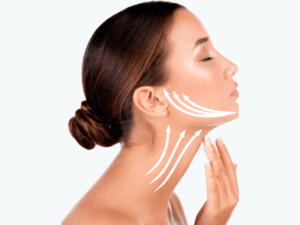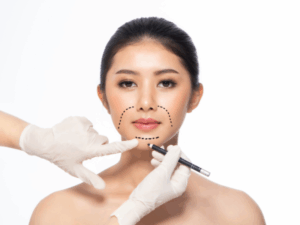Breast Implant
What Is Best Breast Implant Placement Types?

Exploring the Types of Breast Implant Placement and How to Choose the Right One for You?
Breast augmentation is one of the most popular cosmetic surgical procedures globally. It helps women achieve fuller, well-shaped breasts that match their aesthetic goals.
While choosing the right size and shape of breast implants is crucial, another equally important decision involves breast implant placement technique.
If you are considering augmentation, you may wonder: ‘What is breast implant placement and why does it matter?’ It refers to where the surgeon positions the implant within the breast.
The placement determines not only the final look and feel of the breasts but also how natural the results appear, how long they last, and the recovery experience.
This blog dives deep into the types of breast implant placement, their benefits and disadvantages, how to decide what is the right placement for breast implants, and how to choose the best surgeon for this aesthetic procedure.
What Is Breast Implant Placement?
Breast implant placement refers to the surgical positioning of an implant either above, below, or partly beneath the chest (pectoralis muscle). Surgeons choose the best placement based on body type, breast tissue availability, lifestyle, and aesthetic goals.
The three main breast implant placement options are:
- Over the muscle (subglandular placement)
- Under the muscle (submuscular placement)
- In addition, a third technique, dual-plane placement, combines aspects of both.
Types of Breast Implant Placement
When exploring types of breast implant placement, it’s essential to understand how each option differs and what outcomes you can expect.
1. Over the Muscle (Subglandular Placement)
In this technique, the implant is placed above the chest muscle but beneath the breast glandular tissue.
Pros of over the muscle placement:
- Shorter surgery and recovery time.
- Less post-operative discomfort compared to under the muscle.
- Provides more lift in women with mild sagging of the breast.
- Easy access for future adjustments or implant replacement.
Cons of over the muscle placement:
- More visible implant edges, especially in women with little natural breast tissue.
- Higher risk of rippling or wrinkling.
- May interfere with mammogram imaging.
- A less natural look in very slim patients.
This option may suit women with sufficient natural breast tissue to cover up the implant.
2. Under the Muscle (Submuscular Placement)
In this technique, the implant is placed below the pectoralis major chest muscle. This option often works best for women with very little natural breast tissue.
Pros of under the muscle placement:
- Produces a more natural appearance, particularly in slimmer women.
- Reduced risk of implant rippling and visible edges.
- Less interference with mammogram screening.
- Lower risk of capsular contracture (scar tissue tightening around the implant).
Cons of under the muscle placement:
- Longer surgery and recovery period.
- More discomfort in the initial healing phase.
- Possible “animation deformity” (implant moves with chest muscle flexing).
- Some women report problems with breast implants under the muscle, such as tightness or changes in shape during exercise.
Fortunately, these concerns are usually manageable, and most patients are satisfied with their results.
3. Dual-Plane Placement
Dual-plane breast implant placement combines the benefits of both over- and under-muscle techniques. The pectoralis muscle covers the upper portion of the implant, while the lower part sits directly under the breast tissue.
Benefits of dual-plane placement:
- Natural appearance in the upper breast.
- Extra projection and fullness in the lower breast.
- Lower risk of rippling compared to subglandular placement.
- Reduced risk of implant distortion during muscle contraction.
This option is particularly beneficial for women with mild breast sagging who want a balanced, natural look.
The Procedure of Breast Implant Placement
- Anaesthesia – Performed under general anaesthesia to ensure comfort and safety.
- Incision – Small incisions are made, usually in the breast crease (inframammary fold), around the areola, or in the armpit. The incision site is chosen based on implant type, size, and patient anatomy.
- Creating the Pocket – A pocket is carefully created either under the chest muscle (submuscular), above the muscle (subglandular), or partially under and partially above (dual-plane).
- Inserting the Implant – The implant is gently placed into the pocket for precise positioning.
- Closure – Incision closure is done with sutures, surgical tape, or skin adhesive.
The procedure typically takes one to two hours and is often performed as an outpatient surgery. You can return home the same day after the procedure.
Unique steps as per the technique:-
- Submuscular Placement (Under the Muscle)– Implant placement is done beneath the pectoralis major muscle.
- Subglandular Placement (Over the Muscle)- Implant is placed directly behind breast tissue but above the chest muscle.
- Dual-Plane Placement- Combines both techniques by placing the upper part of the implant beneath the muscle and the lower part under breast tissue.
What Is the Right Placement for Breast Implants?
When comparing over the muscle vs under the muscle implants, the “better” choice depends on your unique anatomy and cosmetic goals.
- Over the muscle works well if you have sufficient breast tissue to cover the implant with a shorter recovery time.
- Under the muscle is often ideal if you are very slim, want a natural appearance, or wish to minimise implant-related risks.
- A dual-plane may be the right solution if you want to benefit from both techniques.
Deciding what is the right placement for breast implants depends on several factors, including:
- Your body type (amount of natural breast tissue, chest wall shape).
- Desired look (subtle enhancement vs dramatic change).
- Lifestyle (athletic women may prefer subglandular to avoid animation issues).
- Breast implant shape and size (round vs anatomical implants may suit different placements).
- Long-term considerations, such as mammogram visibility and risk of complications.
Ultimately, only a skilled plastic surgeon can guide you towards the right placement for breast implants after a thorough assessment.
Breast Implant Placement Pros and Cons at a Glance
|
Placement Type |
Pros |
Cons |
|
Over the Muscle |
Short recovery, more lift, easier revision |
Visible edges, rippling, and less natural in slim patients |
|
Under the Muscle |
Natural look, reduced rippling, safer for mammograms |
Longer recovery, more discomfort, possible animation deformity |
|
Dual-Plane |
Combines benefits of both, natural yet full look |
Technically more complex surgery |
Breast Implants Shapes and Placement
The implant shape also influences the placement.
- Round implants tend to create fuller cleavage and can work well over and under the muscle placements.
- Anatomical (teardrop) implants provide a natural slope and often look best when placed under the muscle or dual-plane.
Choosing the right combination of breast implant shapes and placement is key to achieving long-lasting, aesthetically pleasing results.
Comparison of Breast Implant Placement Techniques
|
Placement Type |
How It’s Done |
Best For |
Benefits |
Considerations |
|
Submuscular (Under the Muscle) |
Implant placed beneath the pectoralis major muscle |
Women with thin breast tissue, those seeking a natural slope |
Natural look, reduced rippling, less interference with mammograms, lower risk of capsular contracture |
Longer recovery, more discomfort, possible implant movement during muscle flexing |
|
Subglandular (Over the Muscle) |
Implant placed behind breast tissue but above the chest muscle |
Women with adequate breast tissue, athletic women, those wanting a more enhanced profile |
Shorter recovery, no animation deformity, fuller appearance |
Higher risk of rippling, visible implant edges in slim women, may interfere with mammograms |
|
Dual-Plane |
Upper implant under muscle, lower implant behind breast tissue |
Women with mild sagging, those seeking balance of natural + fullness |
Natural slope at top, added projection at bottom, versatile outcomes |
More complex surgery, recovery may vary |
Why Choose Dr Faisal Salim?
- Board-certified expertise – Highly experienced plastic & cosmetic surgeon in Dubai with FRCS (Plast), MRCS, and CCT in Plastic Surgery.
- World-class training and International recognition – Holds global qualifications and licences from the UK, US, and Sweden, ensuring precise benchmarked care.
- Specialist focus – Expertise in complex breast surgery, breast augmentation, facelifts, abdominoplasty, body contouring, and other cosmetic surgical procedures.
- Patient-first approach – Known for honest advice, realistic expectations, and compassionate care throughout every stage.
- Proven results – Backed by exceptional patient testimonials praising his natural, life-changing outcomes.
With Dr Faisal, you can confidently choose the right breast implant placement for safe, natural, and transformative results.
Choosing the Best Breast Implant Placement with Dr Faisal Salim
Understanding the different breast implant placement types, their benefits and disadvantages, and how they interact with implant shapes is essential for making an informed decision about breast augmentation.
Whether you choose over-the-muscle, under-the-muscle, or dual-plane placement, your choice should be guided by your unique anatomy and goals.
With his expertise in cosmetic breast surgery, Dr Faisal Salim provides personalised guidance, advanced surgical techniques, and natural-looking outcomes.
Take the first step towards your transformation. Book your consultation with Dr Faisal Salim today and discover what is the right placement for breast implants for you.
FAQs About Breast Implant Placement
Breast implant placement refers to whether implants are positioned above, below, or partly under the chest muscle. It impacts how natural your breasts look, how long the results last, and the recovery process.
The main types are:
- Over the muscle (subglandular)
- Under the muscle (submuscular)
- Dual-plane placement
Pros include shorter recovery and more lift, while cons include visible edges and a higher risk of rippling.
Yes. While under-the-muscle implants look more natural and reduce rippling, they may cause discomfort, animation deformity, or longer recovery.
Neither is universally “better.” The best choice depends on your anatomy, implant shape, lifestyle, and cosmetic goals.
Under-the-muscle or dual-plane placement works best, as it provides more natural coverage.
Yes. Round implants work almost any position, while anatomical implants typically look better under the muscle or dual-plane.
Patient Testimonials





